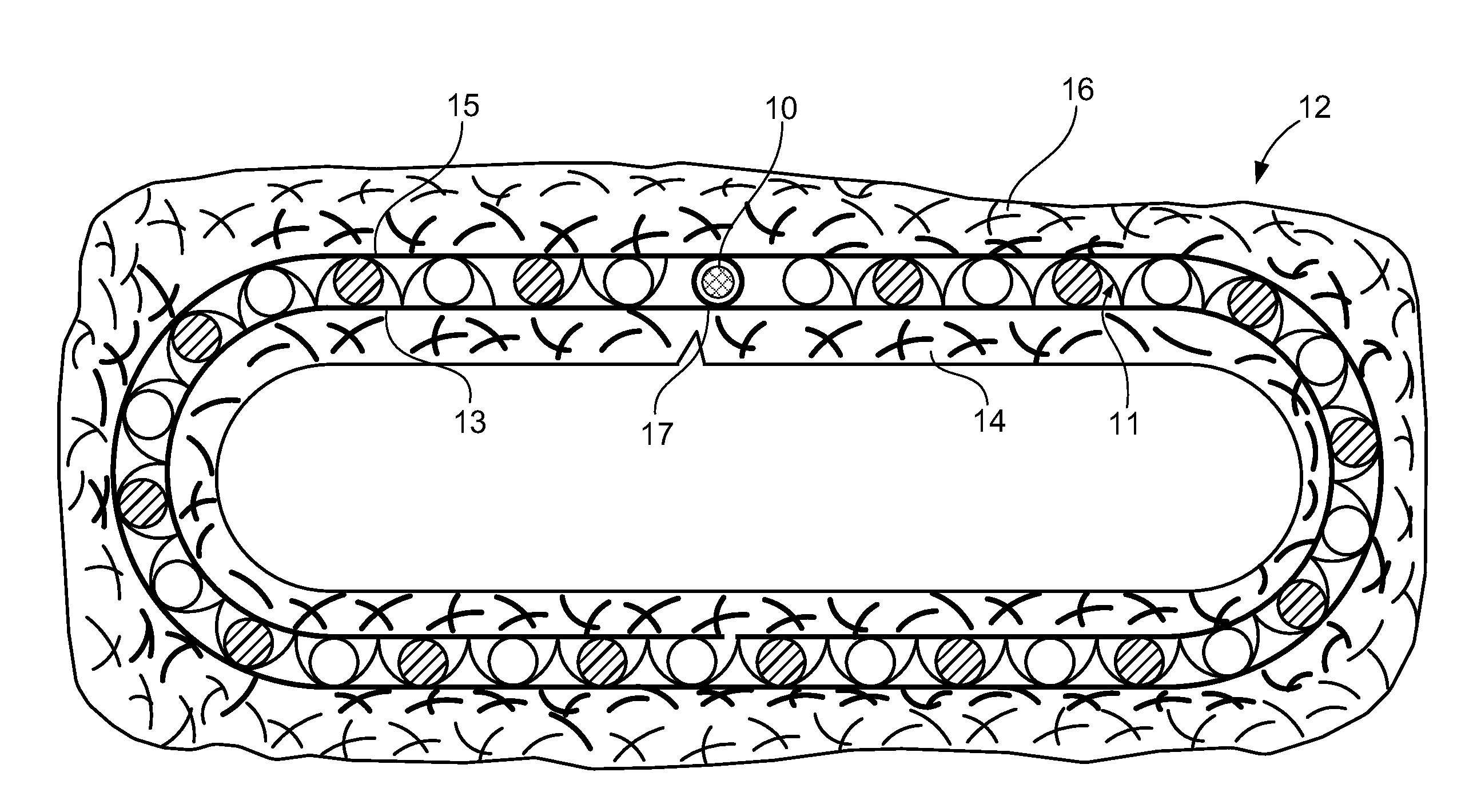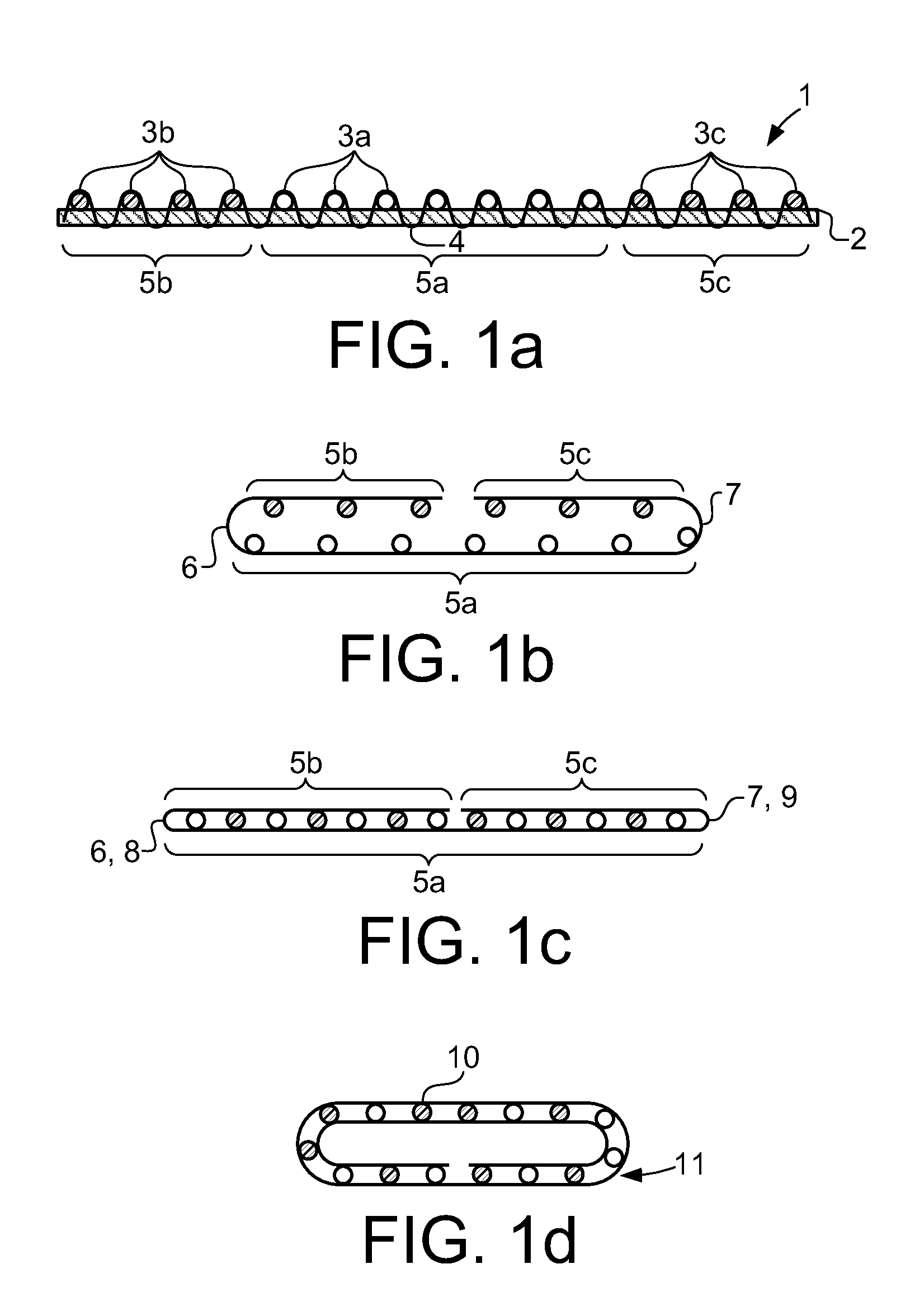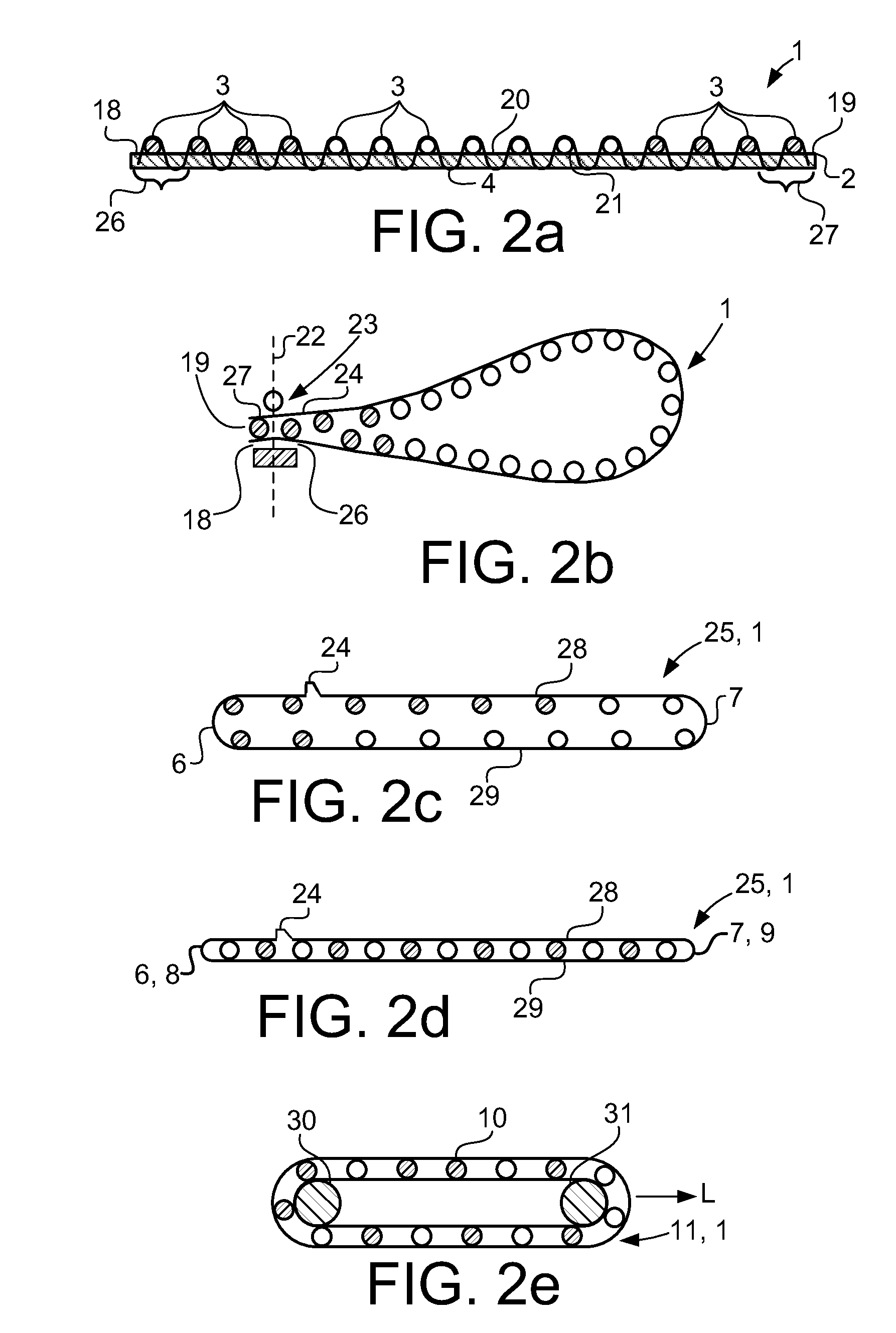Seamable press felt with flat manufactured carrier structure which is not woven
a carrier structure and press technology, applied in the field of press felt, can solve the problems of time-consuming and expensive circular weaving process, and the length of such carrier structure is limited to the width of the weaving loom
- Summary
- Abstract
- Description
- Claims
- Application Information
AI Technical Summary
Benefits of technology
Problems solved by technology
Method used
Image
Examples
Embodiment Construction
[0044]Referring now to the drawings, and more particularly to FIGS. 1a-d, there is illustrated an embodiment of a method according to the present invention for the production of a press felt according to the present invention with carrier structure 11, whereby the manufacture of carrier structure 11 includes the following steps. Textile fabric 1 is provided. Textile fabric 1 is formed from longitudinal threads 2, as well as cross directional threads 3a, 3b, 3c which cross longitudinal threads 2. Longitudinal threads 2 are connected with cross directional threads 3a, 3b, 3c at the cross over points by means of sewing threads 4. In the present example, textile fabric 1 is a single layer warp knit structure. Longitudinal threads 2 are formed from a polyamide and are monofilament threads, whereas cross threads 3a, 3b, 3c are in the form of multifilament threads.
[0045]Warp knit structure 1 is longer than the length of carrier structure 11 which is to be manufactured. In the current examp...
PUM
| Property | Measurement | Unit |
|---|---|---|
| dimensional stability | aaaaa | aaaaa |
| diameter | aaaaa | aaaaa |
| length | aaaaa | aaaaa |
Abstract
Description
Claims
Application Information
 Login to View More
Login to View More - R&D
- Intellectual Property
- Life Sciences
- Materials
- Tech Scout
- Unparalleled Data Quality
- Higher Quality Content
- 60% Fewer Hallucinations
Browse by: Latest US Patents, China's latest patents, Technical Efficacy Thesaurus, Application Domain, Technology Topic, Popular Technical Reports.
© 2025 PatSnap. All rights reserved.Legal|Privacy policy|Modern Slavery Act Transparency Statement|Sitemap|About US| Contact US: help@patsnap.com



